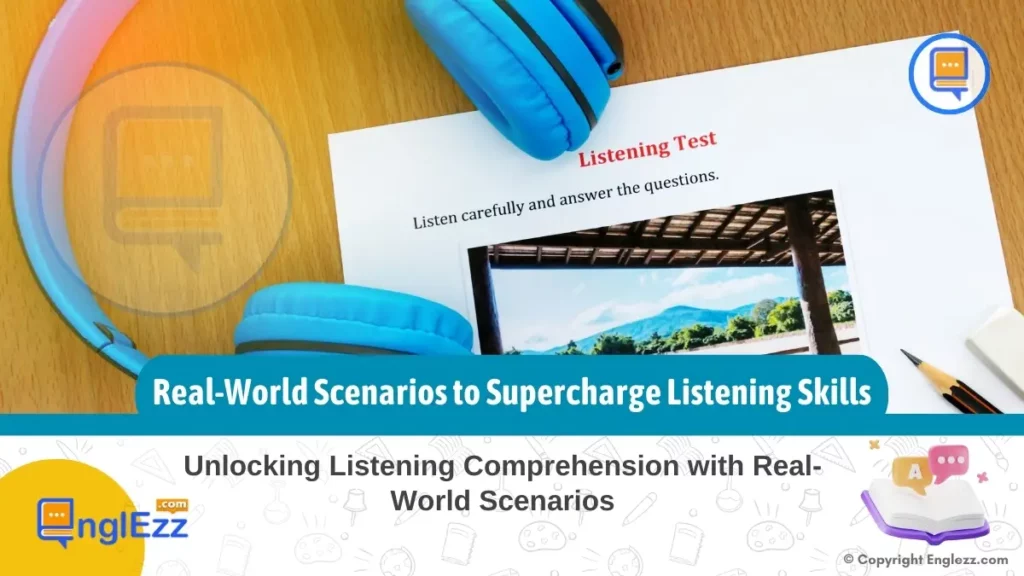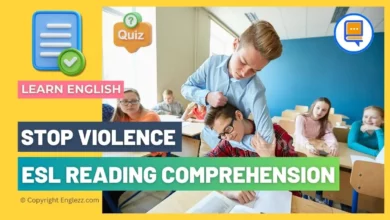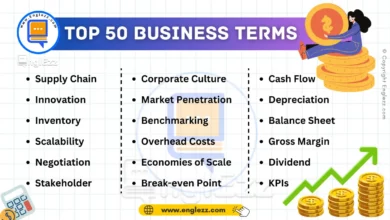In the timeless tapestry of education and life’s intricate moments, one skill stands as a quiet cornerstone of connection: listening. A hallmark of effective communication, listening transcends mere hearing—it embodies understanding, empathy, and growth. Real-world scenarios to supercharge listening skills revealed! Transform your communication with 7 practical exercises on this engaging webpage.
In classrooms teeming with curiosity, virtual landscapes pulsating with information, or intimate conversations laden with meaning, the art of listening orchestrates the symphony of shared experiences. As we delve into the rich fabric of everyday interactions and educational pursuits, the key to unraveling profound comprehension lies in embracing real-world scenarios.
Table of Contents
- 7 Real-World Scenarios to Supercharge Listening Skills
- Scenario 1: Active Listening in Conversations
- Scenario 2: Listening to News Reports
- Scenario 3: Podcasts as Learning Tools
- Scenario 4: Real-Life Situations Role Play
- Scenario 5: Audio Books for Language Learners
- Scenario 6: Virtual field trips
- Scenario 7: Everyday Environmental Sounds Awareness
- Empowering Educators with Practical Listening Strategies
- Improving Listening Comprehension with Real-World Scenarios
- Empowering Educators Through Practical Listening Strategies
- FAQs:
- Q: How can I make sure my students are actively engaged during podcasts or audio book sessions?
- Q: Are virtual field trips feasible for all classrooms?
- Q: What age group benefits most from real-life scenario role plays?
- Q: How do I ensure that environmental sounds awareness activities are inclusive for all students?
- Q: Can these real-world scenarios be adapted for online learning environments?
7 Real-World Scenarios to Supercharge Listening Skills
Imagine immersing learners in not just scripted dialogues but authentic exchanges that mirror the heartbeat of society. Envision kindling curiosity through engaging news reports that spark critical thinking and awareness. Picture embarking on virtual adventures where every click unveils a world ripe for exploration—and attentive ears capture nuances often missed by hurried glances.

With each scenario presented as a portal to heightened listening acumen, we embark on a transformative journey through narratives woven from real-life threads. Let us embark together on this odyssey of discovery—to supercharge our listening skills through the lens of vivid experiences and boundless possibilities.
Scenario 1: Active Listening in Conversations
Active listening plays a pivotal role in effective communication by enhancing comprehension, promoting empathy, and building stronger connections. Educators hold the key to instilling this valuable skill in students, shaping not only their academic success but also their interpersonal relationships. To cultivate active listening during dialogues, teachers can introduce engaging activities that require students to focus on both verbal and non-verbal cues. For instance, group discussions where students must summarize their peers’ opinions demonstrate the importance of attentive listening and encourage respectful dialogue.
Educators can guide students to actively listen by modeling appropriate behaviors themselves. Encouraging eye contact, nodding in acknowledgment, and paraphrasing others’ words are simple yet powerful techniques that promote active engagement in conversations. Teachers can implement exercises like “active listening circles” where students take turns sharing personal experiences while their peers practice active listening skills by reflecting back what they heard accurately. These interactive activities create a safe space for students to develop empathy and understanding through attentive listening.
Interactive games such as “listen and draw” or “telephone game variations” can inject fun into learning about active listening. By incorporating elements of competition or creativity into these exercises, educators can capture the attention of students while reinforcing the importance of fully engaging with speakers. Moreover, real-world scenarios simulated within the classroom setting, like mock interviews or storytelling sessions, provide practical opportunities for students to practice active listening in contexts they may encounter outside the classroom. Through these immersive experiences, learners internalize the significance of truly hearing and comprehending others in various interactions.
Scenario 2: Listening to News Reports
Listening to news reports can be a powerful tool for enhancing listening skills among students of all ages. By tuning in to diverse news sources, learners can expose themselves to various accents, vocabulary, and speech patterns, thus strengthening their comprehension abilities. Educators can leverage this real-world scenario by encouraging students to listen actively to news broadcasts, podcasts, or interviews. This practice not only sharpens listening skills but also fosters critical thinking as listeners engage with complex topics and varying perspectives.
To incorporate current events into classroom discussions effectively, teachers can design activities that prompt students to listen attentively and participate in analyzing the content presented. For instance, organizing debates or roundtable discussions based on recent news stories allows students to practice listening while formulating coherent arguments. By guiding students through the process of summarizing key points from news reports and expressing their opinions thoughtfully, educators facilitate a holistic approach to enhancing both listening and critical thinking skills.
Analyzing and comprehending news content effectively require more than just passive listening — it involves understanding context, identifying biases, and evaluating sources. Educators play a crucial role in teaching students how to dissect news reports by emphasizing fact-checking techniques, verifying information from multiple sources, and distinguishing between facts and opinions. By providing guidance on discerning credible information from sensationalized content, teachers equip learners with essential skills for navigating today’s media landscape responsibly while honing their listening comprehension capabilities.
Scenario 3: Podcasts as Learning Tools
Podcasts have emerged as powerful tools for enhancing listening skills, offering a diverse range of content to captivate learners of all ages. One key benefit of using podcasts in educational settings is the variety they provide, catering to different interests and learning styles. For example, younger students may benefit from educational podcasts that feature engaging storytelling or interactive elements, while older learners could explore podcasts focusing on academic subjects or real-world issues. By incorporating podcasts into lesson plans, educators can create dynamic learning experiences that not only improve listening abilities but also foster critical thinking and curiosity.
When recommending podcast genres or episodes for various age groups, it’s essential to consider both the content and delivery style. For elementary school students, podcasts like “Wow in the World” offer a fun approach to science and technology topics through lively discussions and humor. Middle schoolers might enjoy history-focused shows like “Stuff You Missed in History Class,” which presents intriguing stories from the past in an accessible format. High school students could benefit from news-oriented podcasts such as “The Daily” by The New York Times, providing insights into current events and promoting discussions on relevant issues.

Incorporating classroom activities centered around podcast content can further enrich the learning experience. Teachers can design assignments that involve listening to specific episodes and then engaging students in group discussions or debates based on the themes explored. For language learners, listening comprehension exercises using podcast excerpts with accompanying transcripts could enhance vocabulary retention and pronunciation skills.
Moreover, encouraging students to create their own mini-podcasts on class topics can boost creativity and communication abilities while honing their listening proficiency in a practical way. By embracing podcasts as educational tools, educators empower students to broaden their horizons through active listening and meaningful dialogue.
Scenario 4: Real-Life Situations Role Play
Role-playing real-life scenarios presents a dynamic way to boost listening and communication skills in students. By embodying different roles and engaging in simulated interactions, learners not only sharpen their ability to follow conversations but also practice expressing themselves effectively.
For example, imagine a classroom scenario where students role-play a job interview situation. One student takes on the role of the interviewer while another plays the job applicant. Through this exercise, students must listen attentively to questions, formulate coherent responses, and adapt their communication style based on cues received—a comprehensive test of both listening comprehension and communication skills.
Teachers looking to incorporate role-playing exercises into their curriculum can explore various scenarios tailored to their students’ interests and learning objectives. From healthcare workers discussing treatment plans with patients to diplomats negotiating international agreements, the range of scenarios is vast and flexible enough to suit diverse educational settings and age groups. Furthermore, introducing multicultural scenarios allows students to embrace different perspectives and enhance their understanding of intercultural communication nuances.
By adjusting the complexity of scenarios based on students’ proficiency levels, educators can scaffold learning experiences that progressively challenge and empower learners in their listening and speaking abilities.
Following each role-play session, debriefing plays a crucial role in solidifying the learning outcomes achieved during the activity. Through reflective discussions post-role play, students can identify areas of strength and areas for improvement in both their listening skills and overall communication effectiveness. Debriefing sessions offer a platform for constructive feedback exchange among peers or between teachers and students, fostering a supportive learning environment where growth is encouraged. By emphasizing active reflection on their performance in simulated real-life situations, learners can internalize key insights derived from the experience, paving the way for continuous improvement in their listening and communication competencies.
Scenario 5: Audio Books for Language Learners
Audio books present a treasure trove of benefits for language learners looking to sharpen their listening skills and enhance overall proficiency. By immersing students in authentic spoken language, audio books offer a dynamic and engaging way to improve comprehension, pronunciation, and vocabulary retention. Unlike traditional text-based learning, audio books provide an auditory stimulus that mirrors real-life conversations, making language acquisition more natural and enjoyable. For educators seeking innovative methods to boost listening abilities in language learners, incorporating carefully selected audio books into the curriculum can be a game-changer.
When it comes to selecting appropriate audio books for different proficiency levels, considerations such as language complexity, narration speed, and genre relevance play a crucial role. For beginners, opting for audio books with clear enunciation and slower pacing can help build a strong foundation in listening comprehension. Intermediate learners may benefit from narrative styles that introduce a wider range of vocabulary while maintaining a moderate pace. Advanced language students could explore challenging content with nuanced discussions or cultural references to further refine their listening skills.
Engaging students with audio book materials goes beyond passive listening; interactive activities can elevate the learning experience. Encouraging students to follow along with the text while listening allows for better word recognition and understanding of sentence structures. Moreover, organizing group discussions or debates based on the themes explored in the audio book chapters promotes critical thinking and speaking skills alongside enhanced listening abilities. By incorporating role-playing exercises where students act out scenes from the audio book or create alternate endings, educators can foster creativity and deeper connections with the material, transforming passive listeners into active participants in their language learning journey.
Scenario 6: Virtual field trips
Virtual field trips offer a dynamic approach to learning that engages students in immersive experiences beyond the confines of traditional classrooms. By integrating virtual excursions with guided listening activities, educators can create rich learning opportunities that cater to diverse learning styles and preferences. For instance, during a virtual tour of a historical site or an ecosystem, students can listen attentively to narrations, ambient sounds, or interviews with experts to deepen their understanding of the subject matter. This interactive approach fosters active listening skills while sparking curiosity and critical thinking.
Guided listening activities during virtual field trips can vary from identifying specific sounds in different environments to analyzing speeches or conversations related to the virtual setting. For example, in a simulation of a bustling market scene, students may be tasked with discerning various vendors’ voices or deciphering negotiation dialogues. Such exercises not only enhance listening comprehension but also help develop cultural awareness and empathy as students immerse themselves in different contexts through soundscapes. By incorporating technology into these experiences, educators can leverage multimedia resources to create engaging and memorable learning moments that transcend traditional teaching methods.
The integration of technology with guided listening activities during virtual field trips opens up new avenues for enhancing students’ cognitive and emotional engagement with the subject matter. Through interactive platforms that enable exploration and observation, learners can actively participate in the learning process while honing their auditory perception skills. Moreover, by encouraging reflection on their virtual experiences through discussions or assignments post-trip, educators can reinforce key concepts and facilitate deeper connections between classroom content and real-world scenarios. Ultimately, virtual field trips combined with guided listening activities represent a powerful educational tool that empowers students to expand their horizons and cultivate lifelong learning habits.
Scenario 7: Everyday Environmental Sounds Awareness
In the realm of sharpening listening skills, tuning into everyday environmental sounds plays a crucial role in cultivating a deeper connection with our auditory senses. By emphasizing the significance of being mindful of the sounds that surround us – whether it’s the gentle rustling of leaves in a park, the distant hum of traffic on a bustling street, or the rhythmic tapping of raindrops against a window – individuals can enhance their ability to listen actively and attentively. Encouraging students to engage with these ambient noises fosters a sense of presence and helps them develop a heightened awareness of their surroundings.
To help learners elevate their sensitivity to environmental sounds, educators can introduce various techniques such as sound mapping exercises where students plot different noises they hear in specific locations, blindfolded listening sessions to focus solely on auditory cues without visual distractions, or even guided mindfulness practices that center around listening to nature sounds. By immersing themselves in these auditory experiences consciously, individuals can train their ears to discern subtle nuances and patterns within an array of environmental sounds, ultimately refining their listening capabilities.
It is essential to underscore the transformative impact that increased awareness of everyday environmental sounds can have on overall listening proficiency. Through reflection and introspection on how attentiveness to soundscapes enhances one’s ability to decode information accurately, individuals are empowered to navigate complex auditory environments with confidence and precision. By infusing classrooms with activities that promote engagement with ambient noises, educators can instill in students a profound appreciation for the diverse range of sounds present in their daily lives, opening doors to new avenues for improving their listening comprehension skills effectively.
Empowering Educators with Practical Listening Strategies
As we draw to a close in our exploration of real-world scenarios to elevate listening skills, it’s essential to reflect on the transformative power these experiences hold. By immersing learners in authentic environments where they engage actively with auditory stimuli, educators pave the way for enhanced comprehension and communication abilities.
The key takeaway from this journey is that listening, far from being a passive act, is an art form that can be finely honed through exposure to diverse scenarios that mirror real-life interactions. Whether it’s deciphering news reports or engaging in role plays based on everyday encounters, the integration of practical listening strategies opens doors to enriched educational experiences.

In reinforcing the impact of infusing teaching practices with real-world contexts, educators are encouraged not only to transmit knowledge but also to cultivate vital life skills. By intertwining academic content with tangible applications in students’ lives, teachers can instill a deep appreciation for active listening that transcends classroom boundaries. Through embracing versatile methodologies such as leveraging podcasts for language learning or embarking on virtual field trips supported by guided activities, educators empower their learners to navigate complexities with confidence and clarity.
To inspire educators, parents, and language learners alike to embrace the plethora of methods available for enhancing listening proficiency, we urge a shift towards viewing learning as a holistic journey driven by curiosity and experiential growth. By championing a culture of curiosity and adaptability within educational settings, stakeholders actively contribute to creating dynamic learning environments where listening becomes an artful dance between understanding words spoken and interpreting the unspoken nuances embedded within each scenario presented.
Let us continue fostering a generation of adept listeners who excel not just academically but also empathetically through the rich tapestry of diverse listening experiences available at our fingertips.
Improving Listening Comprehension with Real-World Scenarios
As you continue to implement real-world scenarios to enhance listening comprehension, consider the following tips to enrich your teaching strategies and elevate students’ learning experiences.
- Firstly, encourage active participation by incorporating group discussions where students can practice their listening skills in a collaborative setting. By engaging in conversations with peers, students not only improve their ability to comprehend diverse perspectives but also sharpen their active listening techniques through interactive dialogue exchanges. For instance, organizing debate sessions or classroom debates on relevant topics can foster deep listening and critical thinking skills among students.
- Secondly, leverage technology to amplify listening activities by integrating audiovisual materials that cater to various learning styles. Utilize multimedia resources such as educational videos, virtual reality simulations, or online presentations to offer auditory and visual stimuli that enhance listening comprehension. For example, incorporating TED Talks or educational YouTube channels into lesson plans can expose students to different accents, tones, and speech patterns while reinforcing their focus on auditory input. This multimedia approach diversifies the listening experience and creates dynamic learning environments that captivate learners’ attention.
- Lastly, embrace experiential learning opportunities outside the classroom to immerse students in real-life contexts that demand acute listening skills. Field trips to museums, parks, or community events provide authentic scenarios for students to practice active listening amidst environmental sounds and live interactions. Encourage students to observe and listen attentively during these excursions, emphasizing the importance of tuning into details and nuances within different settings. By connecting classroom teachings with tangible experiences in the outside world, students develop a holistic understanding of how listening comprehension applies across various contexts.
Incorporating these final tips into your educational practices will not only optimize students’ listening abilities but also cultivate a deeper appreciation for effective communication skills in both academic and personal realms. By fostering a culture of active engagement, technological innovation, and real-world exploration within the realm of listening comprehension education, educators can nurture well-rounded learners who are adept at deciphering complex auditory information with clarity and confidence.
Empowering Educators Through Practical Listening Strategies
As we conclude our exploration of unlocking listening comprehension with real-world scenarios, it is evident that these practical strategies have the power to supercharge listening skills in learners of all ages. By embracing active listening in conversations, analyzing news reports critically, delving into educational podcasts, engaging in role plays, immersing oneself in audio books, embarking on virtual field trips, and heightening awareness of everyday environmental sounds, educators can truly transform the way students absorb information and interact with the world around them.
In a constantly evolving educational landscape, the incorporation of authentic experiences through real-world scenarios not only enhances listening comprehension but also nurtures essential life skills such as empathy, critical thinking, and communication. By fostering a learning environment rich in diverse listening opportunities, educators empower both themselves and their students to navigate the complexities of today’s society with confidence and curiosity.
FAQs:
Q: How can I make sure my students are actively engaged during podcasts or audio book sessions?
A: Encourage active participation by incorporating discussion questions or reflective journal prompts related to the content they listened to. This allows students to process what they heard and engage with the material further.
Q: Are virtual field trips feasible for all classrooms?
A Virtual field trips can be adapted to various settings regardless of resources. Utilize online platforms offering free virtual tours or create your own guided experiences based on curriculum objectives.
Q: What age group benefits most from real-life scenario role plays?
A: Role plays can benefit learners of all ages by providing immersive learning experiences. Tailor scenarios to suit the cognitive abilities and interests of different age groups for maximum engagement.
Q: How do I ensure that environmental sounds awareness activities are inclusive for all students?
A: Consider incorporating a variety of environments and soundscapes to cater to diverse backgrounds and sensory preferences. Encourage students to share their interpretations and reflections on the sounds they experience.
Q: Can these real-world scenarios be adapted for online learning environments?
A: Absolutely! Many of these scenarios can be seamlessly integrated into online teaching platforms using digital resources like virtual reality simulations, online news articles, podcast episodes, audiobooks, and interactive sound libraries tailored for educational purposes.








